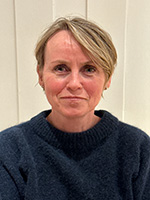Due to copyright issues, an electronic copy of the thesis must be ordered from the faculty. For the faculty to have time to process the order, the order must be received by the faculty at the latest 2 days before the public defence. Orders received later than 2 days before the defence will not be processed. After the public defence, please address any inquiries regarding the thesis to the candidate.
Trial Lecture – time and place
See Trial Lecture.
Adjudication committee
- First opponent: Senior Medical Writer Karoline Doser, Novo Nordisk pharmaceuticals, Denmark
- Second opponent: Senior Consultant Torun Gangaune Finnanger, St. Olav's Hospital
- Third member and chair of the evaluation committee: Professor II Morten Ingvar Lossius, University of Oslo
Chair of the Defence
Professor Emeritus Drude Merete Fugelseth, University of Oslo
Principal Supervisor
Senior Researcher Mia Cathrine Myhre, OUS - Oslo University Hospital
Summary
Traumatic brain injury of all severity grades in childhood (pTBI) may lead to long-term symptoms. Depending on the extent and location of the injured area, problems with participating in school and social interactions may range from mild to severe.
Rehabilitation has positive effects on outcomes after pTBI. However, there have been many reports of children experiencing a lack of tailored rehabilitation after pTBI. Determining which patients may develop long-term symptoms and need follow-up may be challenging.
We found the main injury mechanisms to be falls and traffic accidents, followed by sports accidents. Girls got head injuries as often as boys at the age of 14-15. Those with visible brain damage on CT or MRI had more extended hospital stays than those without. Children under the age of 7 appeared to suffer more severe damage to brain tissue than older children after the same type of injury. Those with hospital stays lasting two days or more and those with visible brain damage on CT or MRI have an increased risk of long-term symptoms and need planned follow-up.
We compared children hospitalized with pTBI with children hospitalized with other injuries of comparable severity. Those with pTBI had less planned follow-up at discharge than children with other injuries (20% vs. 95%). Almost half of the patients with pTBI (47%) did not receive the accommodations they needed six months after the injury, reporting problems at school due to persistent cognitive and emotional symptoms, concentration difficulties, and fatigue. Two years after the injury, 25% of patients with pTBI still had symptoms but fewer accommodations than they needed. We must increase knowledge of the consequences of pTBI in the healthcare system, schools, and among parents and plan better follow-ups. Follow-up should last several years after the injury and ensure that accommodations are initiated and continued throughout the upbringing. Children face increasing demands at school and socially as they age.
Additional information
Contact the research support staff.
